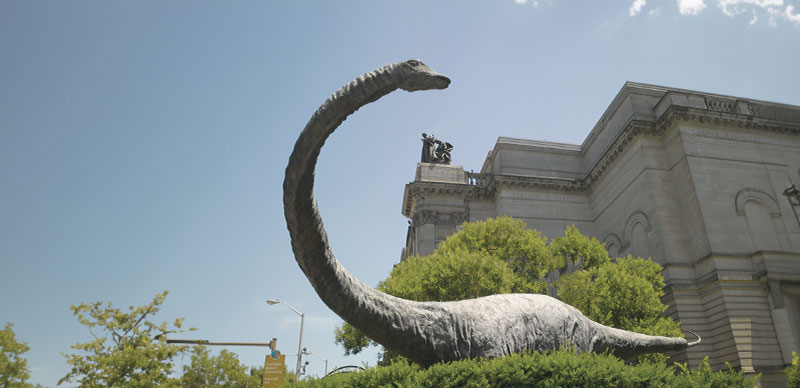Doo-Dah!: Stephen Foster and the Rise of American Popular Culture
by Ken Emerson
Simon & Schuster, 1997, 400 pp., $30.00
Reviewed
by Victoria Cole
Just when the Chicken Little
tone of our current culture wars promises to become unendurably predictable,
along comes Ken Emerson. His Doo-Dah!: Stephen Foster and the Rise of American
Popular Culture opens a window to let in the much-needed fresh air of historical
perspective on our stuffy debates over “multiculturalism” and “diversity.”
By the end of this engaging work, the reader’s view of our current situation
includes an understanding that racial tension, cultural turf wars, and
the intermingling of “black” popular culture with “white” popular culture
is as old as our republic, doubtless older.
Not the least pleasure of this perspective is the
author’s own breezy prose. A rarity in this age of academic specialists
and critically top-heavy scholarly discourse, Emerson has produced a readable,
often funny depiction of the origins of American popular music. Along the
way he surveys the landscape in which popular culture engages us, our expectations
and prejudices.
And what a scene! Emerson plunges us straightway
into the same chaotic cultural melange that so intrigued observant 19th-century
visitors to our shores like Dickens and Mrs. Trollope. Stephen Foster’s
native Pittsburgh emerges as a brawling, grimy, vivid place.
Still nearly a frontier city already grappling in
the 1820s with problems of ethnic conflict which endure to this day, the
inhabitants of Foster’s Pittsburgh were a boisterous lot. They engaged
in the kind of street expressions of politics, celebration, or just plain
mob violence which make our current public culture pale in comparison.
Politics often led to fisticuffs, the right song could emotionally sway
a crowd from ugliness to laughter, and people fought in the streets to
get to hear Jenny Lind. It’s a long way from this to the careful correctness
characterizing the choreographies of, for example, a party convention today.
Foster was right in the thick of it, and his response
to this rollicking milieu forms the core of Emerson’s book. Unfortunately,
however, Emerson’s leading man simply cannot sustain the reader’s interest
for very long. Foster emerges as something of a wash-out, however gifted
a tunesmith. About halfway through Doo-Dah! one can’t help noticing
that Foster himself wasn’t an interesting man, and his life not terribly
engaging in the telling. A drop-out, a disastrous businessman, and a bit
of a mama’s boy, Foster survived in his vocation by adopting two very successful
contemporary song styles-blackface minstrel songs and the genteel parlor
ballad. This he did very well.
Emerson is at his best in his offhand discussions
of Foster’s dubious relationship to these two styles. It is astounding
how drippy and downright necrophilic so many of Foster’s genteel lyrics
sound today. His white heroines (“Jeanie with the Light Brown Hair,” “Little
Belle Blair,” “Gentle Annie,” as well as assorted mothers and wives) are
dreamy, drifty, or dead. Foster sentimentalized women in order to organize
the pain in his life, including a failed marriage, and his beloved mother’s
death.
Much of the blackface material today merely embarrasses.
Emerson’s clear eye on the racist “minstrel” songs reveals to all today’s
racial doom-sayers that we have indeed traveled quite a distance from the
days when white boys in blackface stood around caroling how they’re “longing
for de old plantation.”
If anyone still needs a demonstration of the difference
between high culture and popular culture, think how infinitely more subtle,
complex, and engaged are Mark Twain or even Harriet Beecher Stowe with
issues of race in America than these squirmy-making lyrics.
Emerson labors mightily to retrieve some genuine
sympathy for the black man from Foster’s self-proclaimed “Ethiopian” tunes.
But he doesn’t gloss over their appalling aspects. Yet it is true that
from this muddy spring the author traces the beginnings of jazz, which
has emerged in our century as popular music’s most interesting and integrated
form.
It was one of the tragedies of the composer’s short
life that because he sold the copyrights to his work for a pittance, he
never profited from his own fame. Just how famous was he? Suffice it to
say that Foster songs were translated into Chinese in his lifetime. Tradesmen
hummed Foster songs on the job, and opera singers sang them as encores.
However discredited Foster’s vision may be today,
we may look back and envy the sheer participatory glee which his audience
brought to this music. For this music sold, sold universally. Not recordings,
videos, or second-hand interpretations. Rather, middlebrow America went
out and bought the sheet music and stood around the parlor piano to sing
it, together. Those with no piano picked up the tunes on the street corners
or in cheap cafés.
Foster’s music, with all its prettifying lyrics and
bald stereotypes, brought us together in a way that all the CDs in the
world will never do. That is because Americans a century ago were a singing
people. When in 1855 Walt Whitman penned “I hear America singing” he referred
to Foster’s America. After finishing Ken Emerson’s Doo-Dah!, a reader
would be well-advised to go over to the piano and sing through one of Foster’s
tunes. It is in the singing that these songs transcend their myriad simplifications
and become a genuine expression of the life and energy that were once ours
by birthright, before we became a nation of passive listeners.
Victoria Cole is manager of Performing Arts at Carnegie Museums of
Pittsburgh.
Contents
Highlights
Calendar
Back Issues
Museums
Copyright 1998 Carnegie Magazine
All rights reserved.
Email: carnegiemag@carnegiemuseums.org



